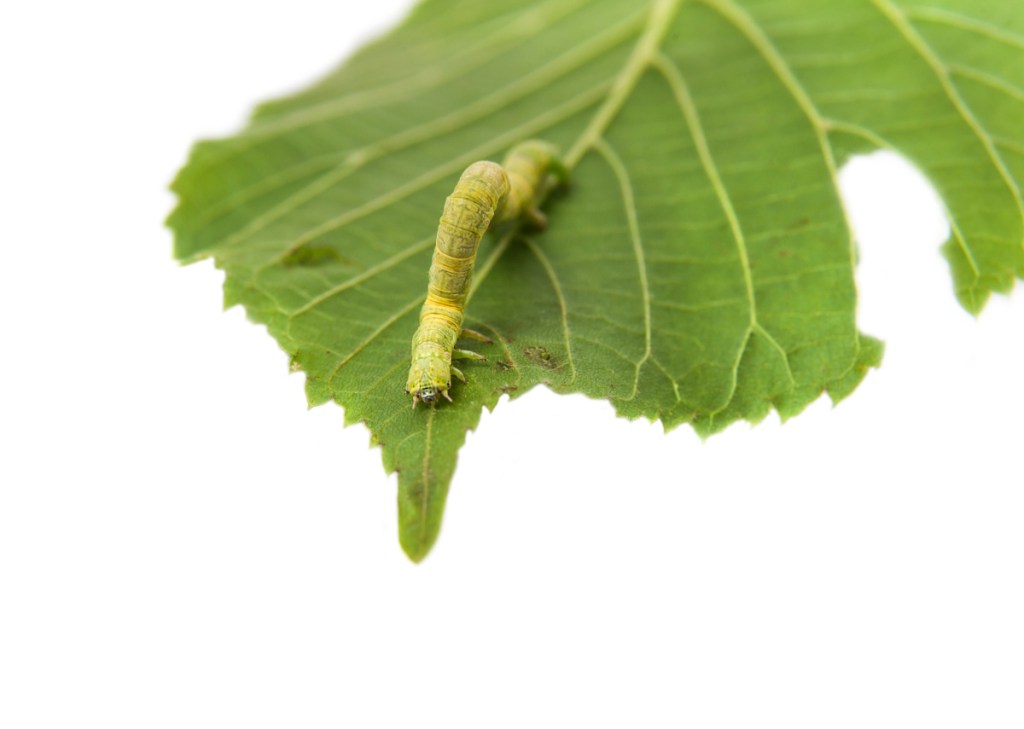Maine is entering plant-sale season. This is when garden clubs, plant societies and other groups with anything to do with growing things raise money by having members dig and divide their perennials, pot up some of the divisions and sell them.
This practice benefits the groups because they raise money to support community projects and the buyers because they get plants at lower-than-retail prices.
Over the past few years, this common fundraiser has developed a bug – literally, although the problem is a caterpillar and not a true bug.
Winter moth has been devastating hardwoods – particularly oaks and maples – in several coastal communities in Maine, and the cocoon for the caterpillars is buried in the soil from late May through November or December. Plants that are dug up in infested areas during those months could carry the problem with them.
“It is a concern,” said Colleen Teerling, an entomologist with the Department of Agriculture, Conservation and Forestry, “but we don’t go as far as to tell people not to hold plant sales.”
For starters, so far only a few Maine communities have high populations of winter moth. They are Vinalhaven, Harpswell, Cape Elizabeth, South Portland and Kittery, according to Teerling. Some level of winter-moth contamination also exists in most coastal communities.
In addition, she said, winter moth and fire ants are the only insects that can be transferred in the soil. Browntail moth and similar pests aren’t carried through soil. (Browntail moths, for instance, overwinter in visible pods made of silk-like strands at the end of tree branches.)
The restrictions on moving firewood more than 50 miles are much more stringent because several insects and diseases that could destroy Maine forests exist in cut wood.
Teerling said that organizations holding plant sales can do several things to reduce the possibility of spreading winter moth.
First, dig plants for the sale early. The male and female moths leave their cocoons and mate in November and December, and the flightless females lay eggs on hardwood trees. The caterpillars hatch in May, eating the leaves of hardwood trees and the occasional blueberry (or other) bush, before dropping to the ground where they form cocoons. So if the plants are dug early, the cocoons are unlikely to be in the ground.
In addition, Teerling said, people growing plants to sell at plant sales should grow them in open fields, not under trees that are subject to winter moth.
One of southern Maine’s largest annual plant sales is held by Cumberland County Master Gardeners, scheduled for 8 a.m. to noon May 19 at the Barron Center on Brighton Avenue in Portland.
“We do most of our digging and planting before May 1,” said Pamela Hargest, a horticulturist with the University of Maine Cooperative Extension who helps coordinate the sale. “On any we dig after May 1, we have to wash the roots of the plants, and we try to avoid that because it’s a lot of work.”
The Master Gardeners sale has a lot more variety than most garden club plant sales.
Hargest said the group emphasizes native and pollinator plants, but also has herbs, vegetable seedlings and flowering annuals. Some are divisions from member gardens, but others are started from seed and a few are grown for the group by a local commercial farm.
Shoppers at plant sales have responsibilities, as well. A gardener from a town well away from the coast, where there is no evidence of winter moth, should not buy plants at plant sales along the coast, where winter moth is likely to exist. Such moving of plants could spread the pests hundreds of miles.
Teerling said the sporadic nature of heavy winter moth populations along the coast is probably because summer residents brought plants from their homes in eastern Massachusetts, which is heavily infested with winter moths, to their summer homes in Maine.
However, a gardener who lives in area that already has winter moth can buy plants from infested areas because the problem already exists in the garden where the plant will be going.
While, as Hargest says, washing plant roots is a lot of work, sometimes it can’t be avoided.
McLaughlin Garden in South Paris is creating a garden of irises that were developed by famed Maine hybridizer Currier McEwen. McEwen’s daughter, Ann Standridge, offered divisions some of her father’s irises – but because Standridge lives in Harpswell, one of the first communities in Maine to get the winter moth, the workers took special care to clean every iris rhizome so the area in South Paris wouldn’t get the pest.
Of course, rhizomes would be easier to clean than true roots.
ABOUT THE WRITER
TOM ATWELL is a freelance writer gardening in Cape Elizabeth. He can be contacted at: tomatwell@me.com.
Send questions/comments to the editors.



Success. Please wait for the page to reload. If the page does not reload within 5 seconds, please refresh the page.
Enter your email and password to access comments.
Hi, to comment on stories you must . This profile is in addition to your subscription and website login.
Already have a commenting profile? .
Invalid username/password.
Please check your email to confirm and complete your registration.
Only subscribers are eligible to post comments. Please subscribe or login first for digital access. Here’s why.
Use the form below to reset your password. When you've submitted your account email, we will send an email with a reset code.